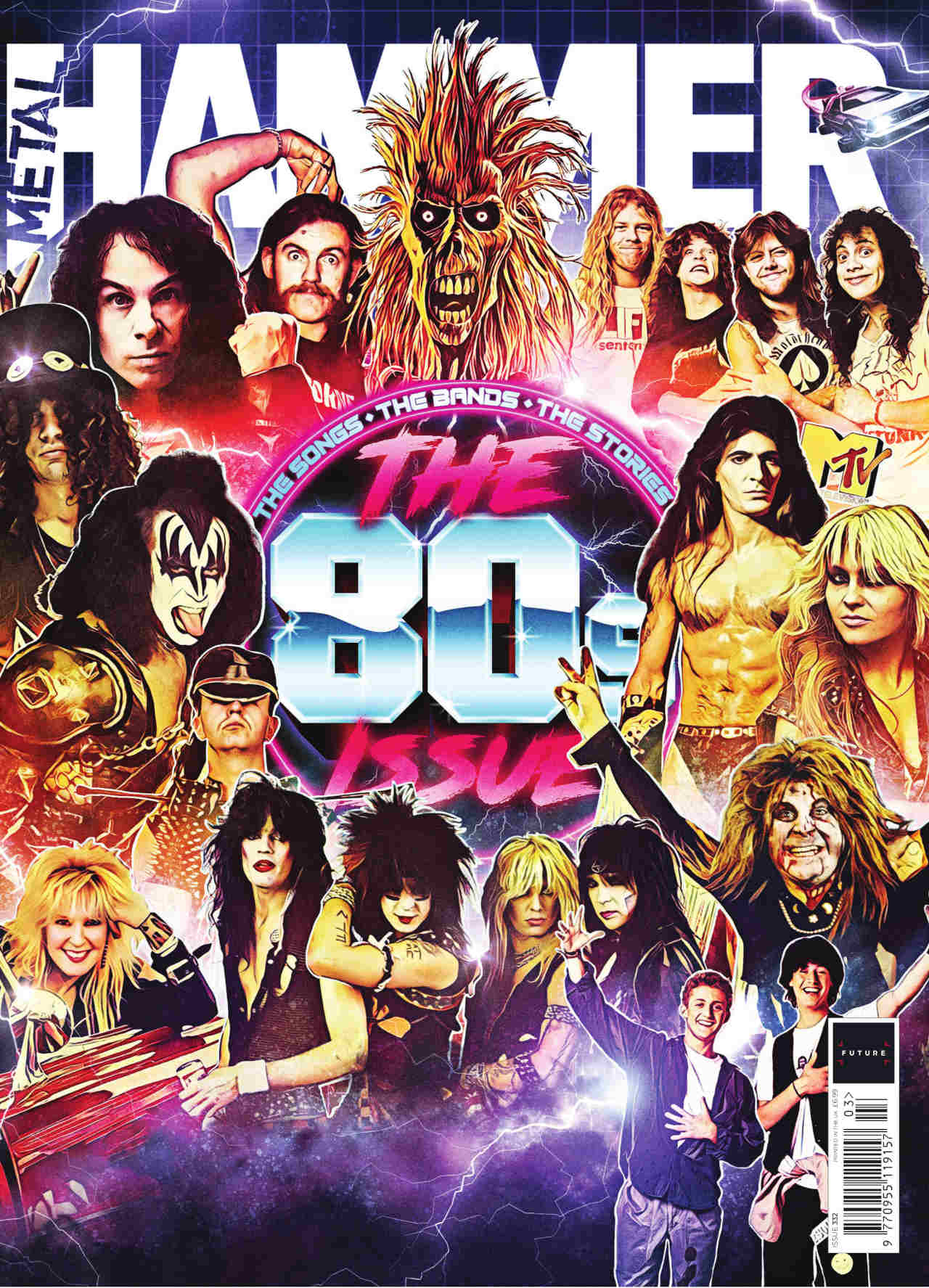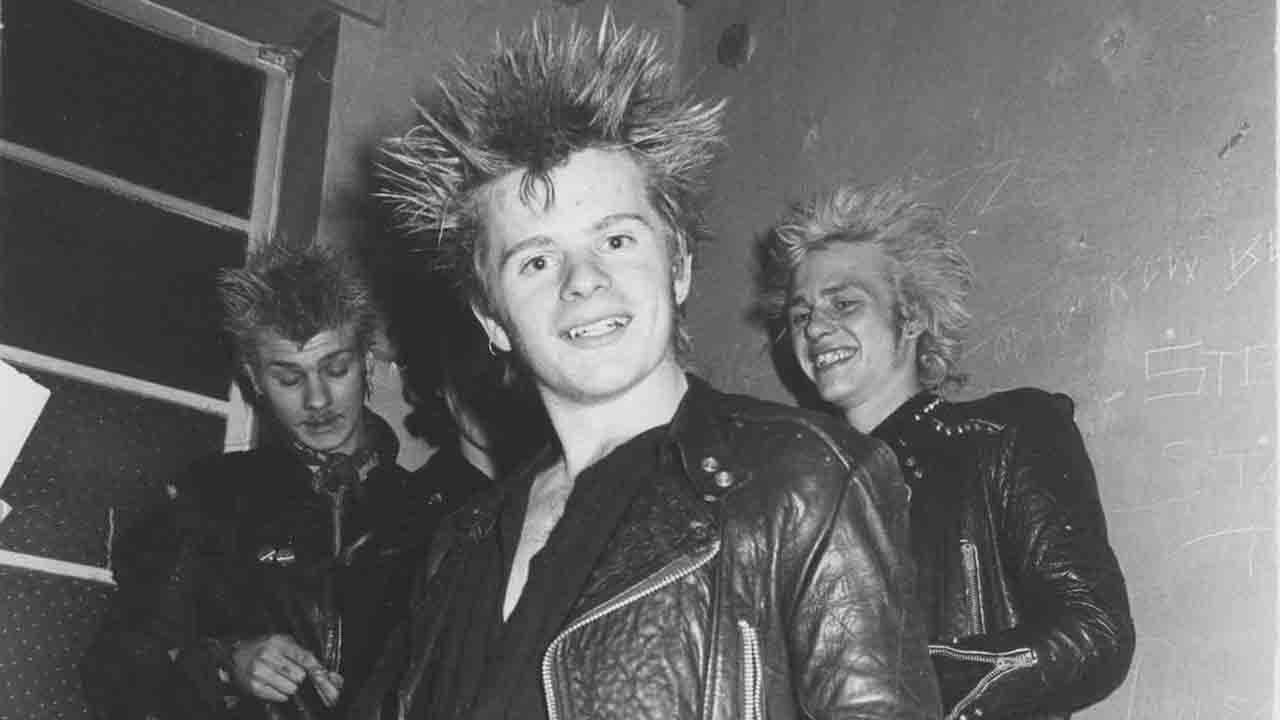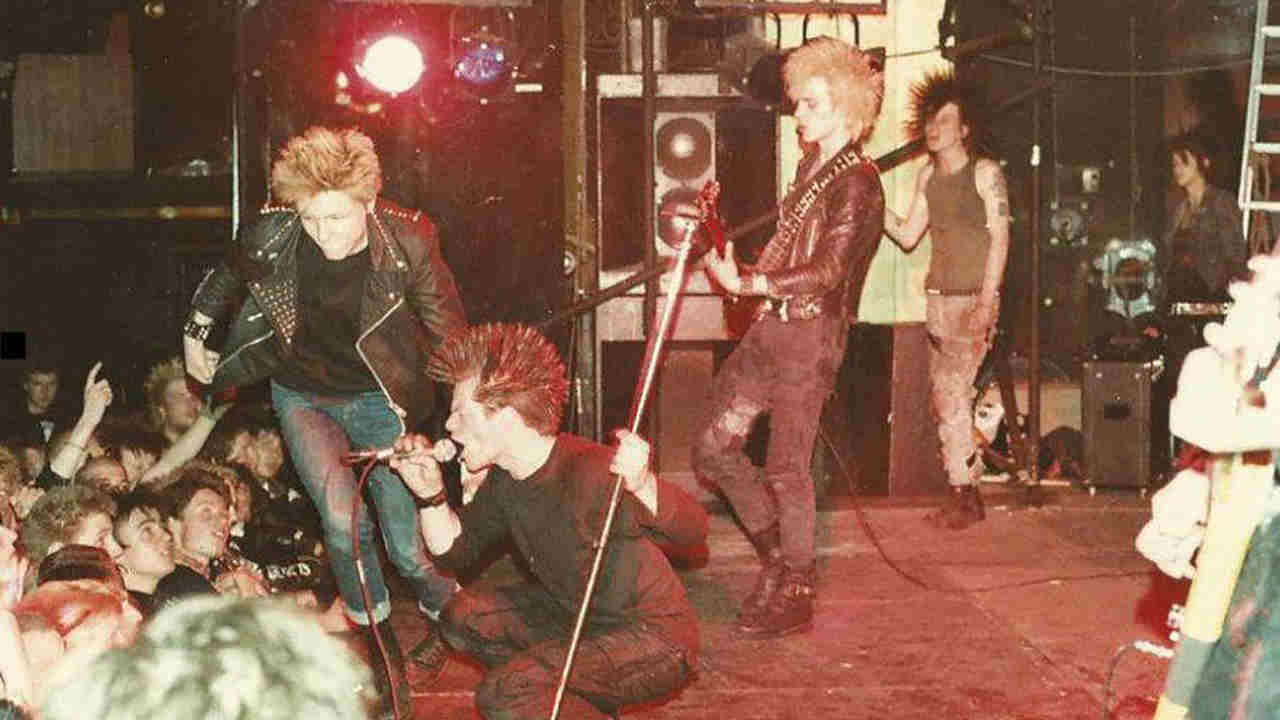Rising at the beginning of the 80s, a brand new wave of bands took the sound and fury of the unique punk motion and turned it into one thing filthier, nastier and extra excessive. Main the cost had been Stoke-on-Trent’s Discharge, a band who would affect numerous steel and hardcore bands that adopted. In 2020, we appeared again at probably the most influential bands of the 80s.
By 1982, everybody thought punk was useless. After the ’77 growth, the style had stagnated, and the bands had been thought-about irrelevant laughing shares. However deep underground, its corpse was twitching, and from the rotten, putrid sludge of punk rose a band that impressed the following era of each steel and punk rock youngsters to make a brand new sort of noise. That is how Discharge’s debut album, Hear Nothing See Nothing Say Nothing, upped the ante.
Shaped in 1977 in Stoke-on-Trent, there was no sign Discharge would make a large dent in heavy music. They had been, as founding guitarist Tony ‘Bones’ Roberts places it, “Simply listening to The Conflict and the Intercourse Pistols and having a go at doing that.”
After a sequence of rudimentary EPs and singles, and quite a few line-up modifications of their early years, they discovered a house within the anarcho-punk scene of the early 80s – a small however devoted haven for people who refused to surrender on punk’s ethics.

“It was a way of life that was totally different, thrilling,” says formerdrummer Garry Maloney, who joined the band a yr earlier than the discharge of Hear Nothing… “Likeminded individuals hanging out and going to gigs. It was good. From my first present, seeing The Damned at Barbarella’s in Birmingham, to a couple years later watching Black Flag soundcheck sitting on my flight case, I cherished all of it.”
Discharge continued to evolve, beefing up their sound whereas additionally trimming the fats. Once they went into the studio to file their debut full- size, they had been armed with a set of songs that might shift the goalposts of extremity. “We actually hit on one thing round that point,” Bones tells us. “We had gone from sounding like a traditional punk band into sounding like one thing else. It was all pure, although. We by no means tried to sound a sure method; we simply began writing sounds about how we felt, and we felt like how that file sounded.”

The sound of how Discharge felt was alarming, even to followers of maximum music. Songs had been brief, inhumanly loud, filled with violent and brutal pictures of conflict and human devastation and, crucially, pushed by the now notorious ‘D-beat’ drum sample. “Properly, that wasn’t actually my factor,” shrugs Garry, crediting authentic member (and present guitarist) Terence ‘Tezz’ Roberts with initiating the fashion. “However I did make some extent of taking part in what felt proper for me. It was barely totally different to the unique singles, which was intentional I assume.”
“That drum beat modifications the way in which you play,” Bones provides. “You possibly can’t assist however get excited by the sound of it. That’d be the premise of what we’d begin with, and it makes every little thing really feel a lot extra pressing, and I undoubtedly reacted to that.”
One other key element of Hear Nothing… was thematic, with the band’s disgust at Thatcherite Britain, paranoia from the specter of nuclear conflict and humanity’s self-destructive tendencies all distilled right into a sequence of brutally blunt slogans. The title observe repeats the traces: ‘Lied to, threatened, cheated and deceived / Hear nothing see nothing say nothing / Led up backyard paths and into blind alleys / Hear nothing see nothing say nothing.’
“I’ve realised how a lot I’ve been influenced by what I name ‘The Discharge haiku’,” says Neurosis frontman and Discharge super-fan, Steve Von Until. “It’s like an odd fashion of poetry – these brief pictures of conflict and political deception. In contrast to their earlier data, most songs had been 4 traces, tops, however they are saying a lot. It makes it epic, and you may apply them to your personal time.”
As Steve factors out, sadly, the album’s themes are as related as ever. “It was shit again then and we had been all pissed off about it,” growls Bones. “It’s even fucking worse now.”
“The specter of conflict and authorities legislation continues to be on the market,” Garry provides. “They’re threats that preserve us all in line.”

As the primary signings to Clay, the Stoke-On-Trent-based label run out of an area file store, the band weren’t afforded a lot time within the studio, as an alternative “getting it out in a single take or so, like we all the time did,” in accordance with Bones. Regardless, the outcomes had been staggering. In round 25 minutes, Discharge had chewed up GBH, Motörhead, Venom and their very own distinctive model of nihilism and spat it again out into the world’s face. Hear Nothing… could be a watershed second; at a time when punk and steel had been mortal enemies, they blurred the traces fully.
“I used to be into steel on the time,” Steve Von Until tells us. “This was earlier than I discovered punk. However when the punks began telling us steel guys that we should always take heed to this album, we had been intrigued.”
The band themselves had no thought what they’d achieved. “It wasn’t deliberate,” says Garry. “I simply thought it was super-cool and turned it up full blast and was off in somewhat world of my very own. It simply advanced from the music we had been listening to and our punk roots.”
Initially, the file was met with confusion and a few hostility. That every one modified when the band had been adopted by the UK’s final taste-maker. “I’m undecided everybody obtained it at first, as a result of they didn’t know if we had been punk or steel,” Bones sniffs. “I’ve by no means cared about any of that stuff personally. However then John Peel performed us on Radio 1 and, I imply, wow! That was an actual honour. Issues modified from then; I might go down the pub and folks could be telling me they heard us on the radio. We obtained an actual enhance from that.”
The file’s fame began to construct, with each punk rockers and steel followers turning into intrigued by this notorious new band. “I noticed the duvet and it appeared so bizarre that I believed, ‘I gotta attempt that’,” says Steve. “I obtained it dwelling and, the second the needle dropped, I felt prefer it was the sound I’d been looking for my entire life. It blew my thoughts vast open and adjusted my life. It had the guitars I needed and that bass was so crushing.”
The affect on thrash and cross- over was meteoric, and inside just a few years D-beat even turned often called its personal subgenre, as lots of of bands from everywhere in the world tried (and principally failed) to recreate the enduring sound. Many even adopted the ‘Dis’-prefix of their title; plagiarism had by no means been so shameless. “Good luck to them,” shrugs Garry.
“I can’t let you know something about any of these bands,” snorts Bones. “I don’t take heed to music… by no means have. In the event you do, you get influenced by it. I need to sound like myself and what’s occurring in my head. But it surely’s good that individuals have been influenced by us. A number of years in the past we performed The Underworld in London, and Metallica got here right down to see us earlier than they performed the O2. That was alright.”
The perfect bands had been those that took Discharge’s ethos and pushed it additional. “What’s extra fascinating to me is when individuals attempt to discover their very own authentic voice of depth,” says Steve. “I can let you know for a incontrovertible fact that there’d be no Neurosis with out Discharge. The way in which they influenced us was that they gave the impression of screams of anguish, screams of conflict, screams of the place humanity is headed – they had been good for that. So, if we need to ponder the existential nature of humanity to search out its battle amongst nature, how can we sound like that? How can we embody these themes? That’s how I hope they’d affect individuals, moderately than copying a method.”
Songs from Hear Nothing… have been lined by everybody from Metallica to Sepultura to Machine Head to Anthrax, and there’s little doubt its legacy is ready in stone. “I nonetheless smile once I see the art work,” says Garry. “It was an ‘all of the planets in alignment’ second. Each observe a killer.”
“There are a few of our data that I can’t take heed to,” Bones tells us. “Not this one. It’s simply obtained one thing about it, hasn’t it? A magic you can’t clarify… it’s timeless.”
Initially printed in Metallic Hammer situation 332, February 2020

